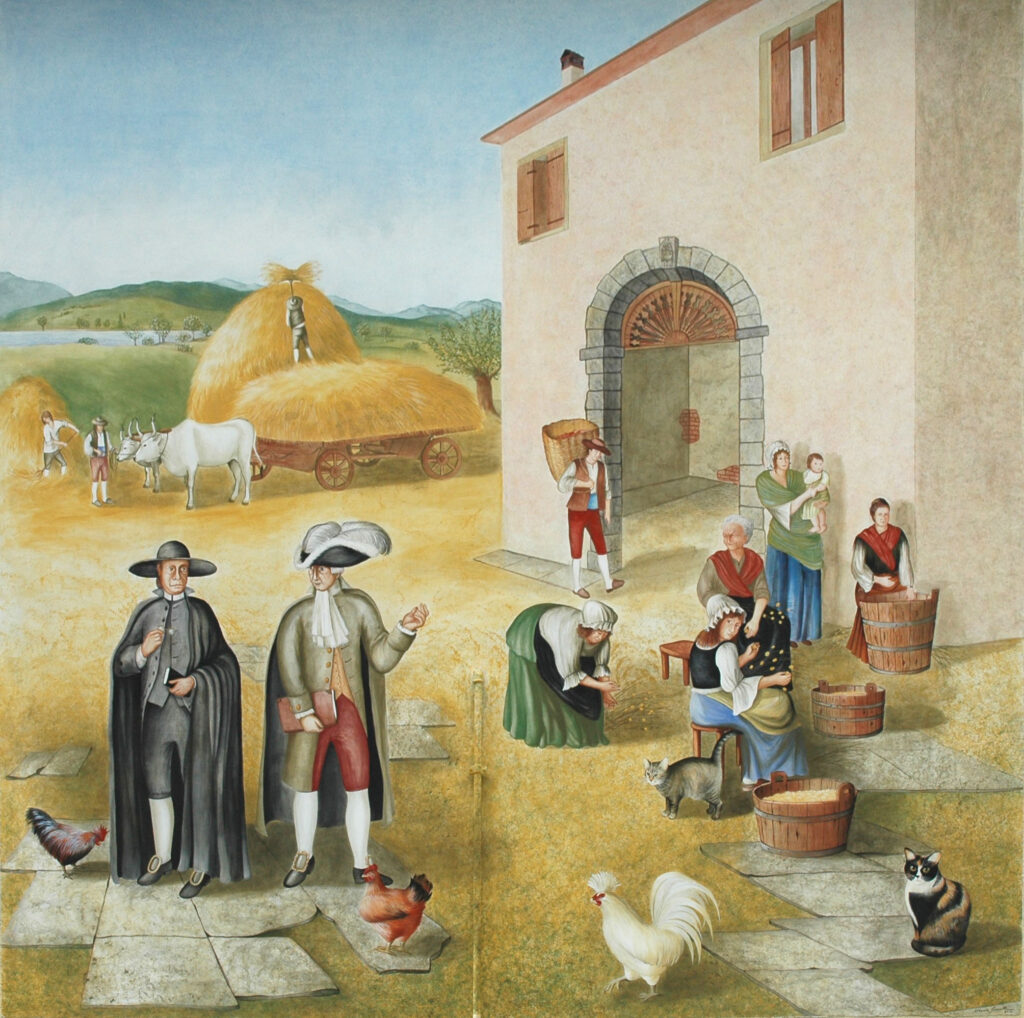
Luogo: Località fratta, 89 Tarzo (TV)
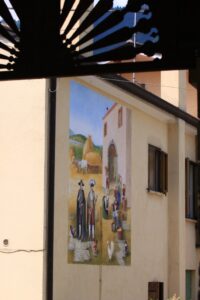
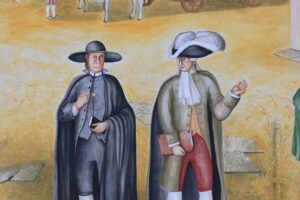
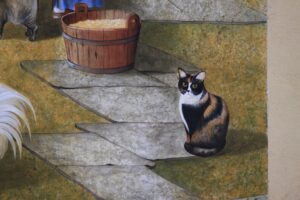
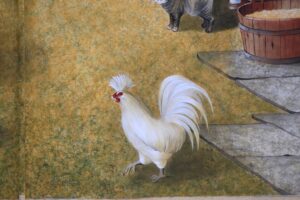
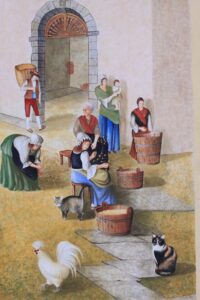
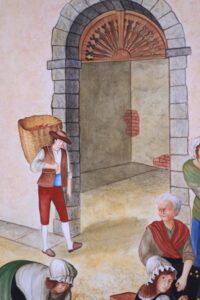
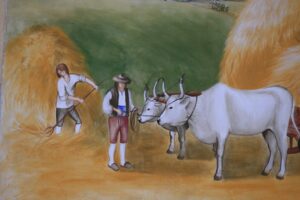
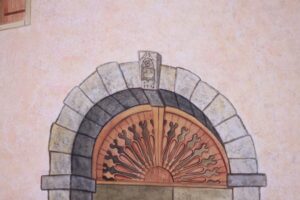
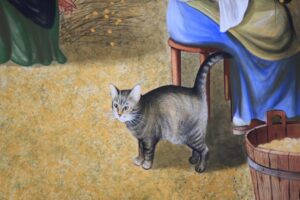

VILLA ROSSI
Ubicazione: Fratta – fronte portico inferiore Villa Rossi
Autore: Maria Benelli
Anno realizzazione: 2012
Tecnica: Pittura murale con silicati
Ci sembrava giusto dare un omaggio alla nobile famiglia Rossi, che per la frazione di Fratta è stata particolarmente importante. Composta da numerosi prelati e notabili, la famiglia Rossi si è adoperata per la crescita della frazione, importanti sono state le pressioni all’allora Vescovo-conte della Contea di Ceneda, Signore delle terre di Tarzo, per la realizzazione del campanile della Chiesa di San Martino.
Nella scena è rappresentato il lavoro dei contadini ed il controllo che i Signori, rappresentati in un prelato ed in un nobile, avevano sui loro raccolti. È stato fatto un lavoro di ricerca per ricavare i lineamenti ed i volti, proprio utilizzando i ritratti originali ancor oggi conservati dai discendenti della nobile famiglia.
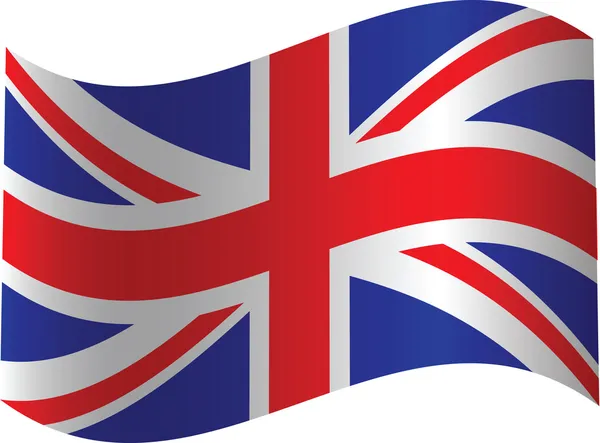
Villa Rossi
Location: Fratta (municipality of Tarzo) – lower front porch of Villa Rossi
Author: Maria Benelli
Year of creation: 2012
Technique: wall painting with silicates
We considered it worthwhile to give homage to the noble Rossi family, which has been particularly important for the village of Fratta. The family, made up of numerous prelates and notable people, strove for the growth of the village. The pressures of the then earl-bishop of the Ceneda county, lord of Tarzo for the realization of the bell tower of St. Martin’s church.
Depicted in the painting is the work of farmers and the control that the lords, represented as a prelate and a nobleman, had on their crops. A notable effort has been done to recreate the faces of the characters using original portraits held by the descendants of the noble family to this day.

VILLA ROSSI
Villa Rossi
Standort: Fratta – Villa Rossi
Autor: Maria Benelli
Jahr: 2012
Technik: Wandmalerei mit Silikatfarbe
Dieses Wandgemälde ist eine Hommage für die Familie Rossi, die wirklich wichtig für Fratta war. Die Familie bestand aus vielen Prälaten und Notare und ließ Fratta wachsen: der Bischof von Ceneda, Herr der Länder von Tarzo, wollte, dass der Kirchturm von San Martino gebaut wird.
In der Szene geht es um die Arbeit der Bauern und die Kontrolle, die die Herrscher, vertreten durch einen Prälaten und einen Adligen, über ihre Ernte hatten.Es wurde Forschung betrieben, um Gesichtszüge und Gesichter zu erhalten, indem die ursprünglichen Portraits verwendet wurden, die noch heute von den Nachfahren der edlen Familie aufbewahrt werden.